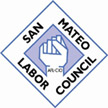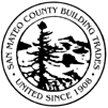


|
|
|
|
|
|
South San Francisco Passes Ban on Big Box Retail Stores
The South San Francisco City Council voted unanimously April 16 to prohibit superstores city-wide and large-format retail stores with a grocery component East of Highway 101. The ordinance banning big box stores was recommended by City Staff. In January 2013, South San Francisco enacted a 16-month moratorium on new permits for large format retail stores—slowing a potential move by Walmart to bring one of its supercenter big box stores to South City. Dozens of union members joined with local merchants and other community members to pack the Council chambers and call on the City Council to support the moratorium proposed by then-Mayor Pedro Gonzalez in December 2012. During the moratorium, city staff studied land use regulations and drafted the ordinance. At the April 16 meeting, San Mateo County Central Labor Council Political Director Julie Lind noted that, “A Superstore’s entry into a new market has a strong negative effect on existing retailers. A study done in 2009 estimating the future effect of Walmart on the grocery industry in California found that the full economic impact of lost wages and benefits throughout the state could approach $2.8 billion per year. Your EIR substantiated this, finding that a new Superstore in the city would translate into a five to nine percent loss in grocery sales for existing stores.” “Local businesses keep more money in the community,” Lind said, citing a study that found locally owned businesses re-circulate twice as much revenue back into the community than big box stores. Tony Rozzi, Associate Planner for South San Francisco, presented the details of the proposed ordinance and the reasons why it is supported by the city Planning Department. He said the objectives of the ordinance were to promote the City’s existing commercial vitality and well-being and promote stable neighborhoods by protecting neighborhood retail uses. Rozzi called the ordinance an example of economically responsible land-use planning. He said it does not conflict with any other plan for the city, and will reinforce the General Plan by protecting the downtown area as the focus of commercial activity and supporting neighborhood shopping centers as primary market areas for grocery sales and diverse retail. Noting that the City Council would also vote to certify the Environmental Impact Report based on a study of a superstore ban, Rozzi said there would be no environmental impacts from banning big box retail, and the ban was “an environmentally superior alternative,” noting that not certifying the environmental study could allow a superstore to be built. SMCLC delegate Rich Hedges of UFCW Local 5, said his union, which has an office in South San Francisco, had also studied the impacts of Walmart and other Big Box stores on the retail and grocery industry. He pointed out that even Walmart’s own studies show it has a negative effect on local businesses. Hedges said the city, unions and other community groups had worked together to develop the Downtown Plan. “This ordinance will ensure that our good Downtown Plan isn’t destroyed by Walmart,” Hedges said. Councilmembers asked staff for clarification about the types of stores that will be banned and how the ban might impact other planned projects. Under the ordinance, a “Superstore” is defined as a retail establishment with over 80,000 square feet of space with full service grocery stores and “Large Format Retail” is defined as a retail establishment over 80,000 square feet with only limited grocery sales (5,000 square feet or less). Convenience Markets (small grocery retailers with less than 5,000 square feet), Grocery Stores between 5,000 to 25,000 square feet, and Supermarkets (primary grocery retailers like Safeway or Pak and Save between 25,000 to 80,000 square feet) are allowed. There was a consensus that other mixed-use projects with smaller grocery stores or supermarkets could go forward. Councilmember Pradeep Gupta said he supported the ordinance because, “If we make it harder for small businesses it’s a bad step.” He said it was better to create growth by taking advantage of opportunities to develop projects that support local businesses. Councilmember Mark Addiego said that, “A well-run supermarket is a community resource. It’s important to protect those and it’s good for the economics of the town.” - Paul Burton, May 2014
|
|||||



